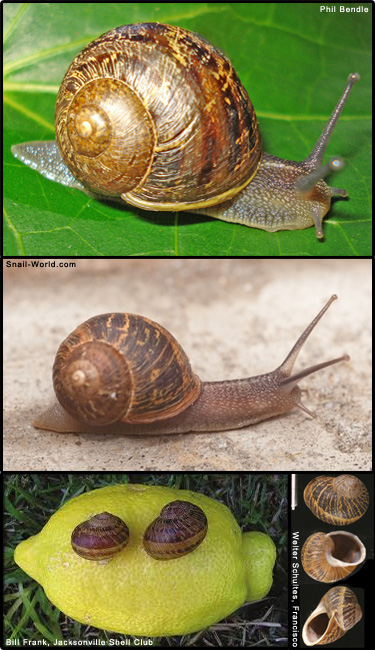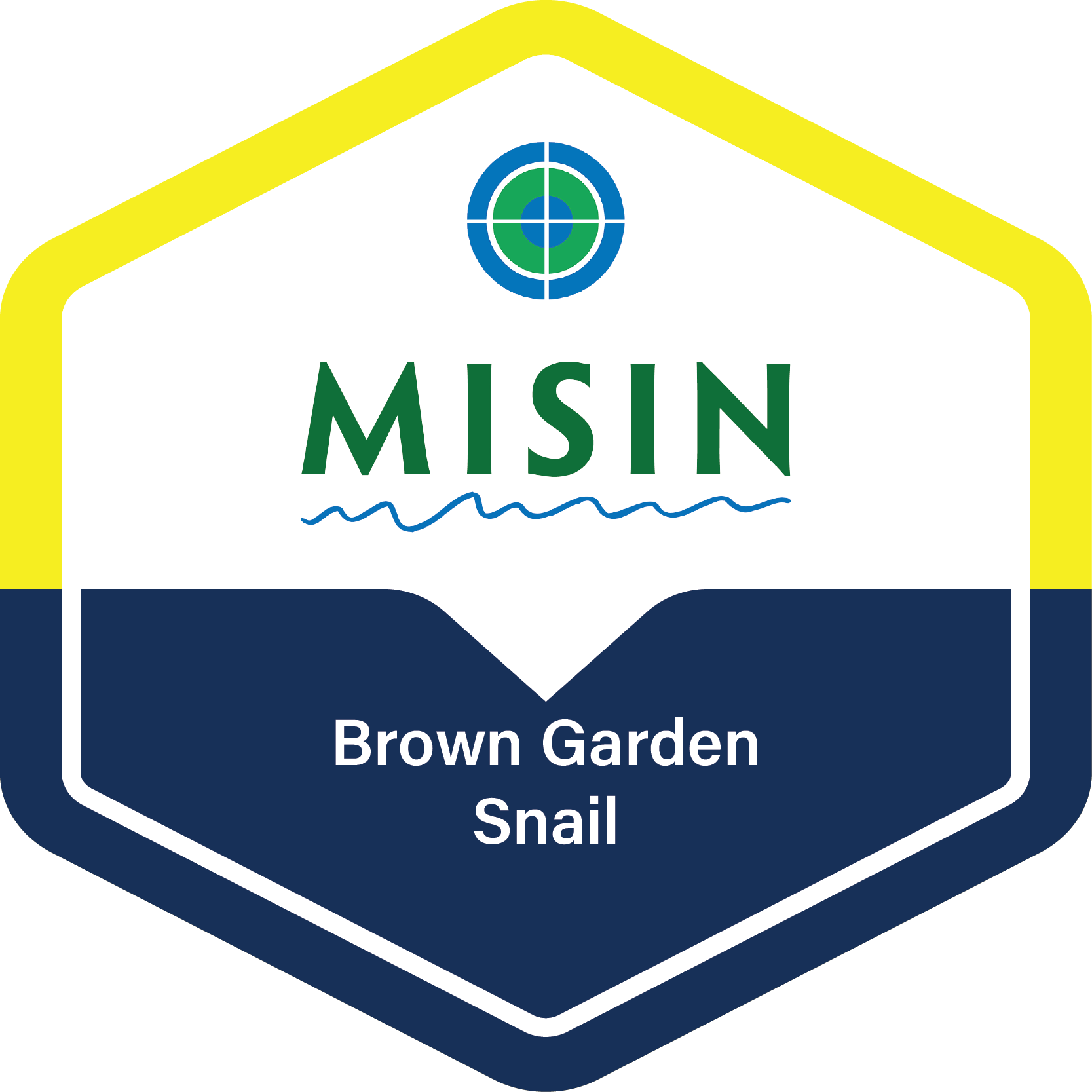Brown garden snail (Cantareus aspersa)
 Synonyms: Cornu aspersa, Helix aspersa, Cryptomphalus aspersus
Synonyms: Cornu aspersa, Helix aspersa, Cryptomphalus aspersusDescription: Introduced to North America (Maine) as early as 1839, and in the 1850?s a French entrepreneur brought them to California intending to sell them as food. They are one of two species primarily used as escargot.
Identification: Brown body; Shell tends to be brown, tan, and yellow with swirls, bands, and flecks; Shell can grow up to 1.25 inches in diameter and leaves a silvery slime trail.
Habitat: Native to Britain, Western Europe, and along the borders of the Black and Mediterranean Seas. Brown garden snails are terrestrial gastropods that prefer undisturbed habitats. Adequate moisture and a good food supply are important habitat requirements. Preference is given to orchards with loamy soils that are well shaded by tree canopy.
Reproduction: Hermaphrodite though mating is required for fertilization. During the mating process they fertilize each other and both will lay around 80 eggs 3-6 days after the mating occurs. Each snail will create a nest by digging a hole in the soil with its foot. Each hole will be 1-1.5 inches deep. They are able to lay 6 batches of eggs per year and each newborn takes 1-2 yrs to mature.
Impact and Damage: The rasping mouthparts of the brown garden snail leave behind irregular holes and jagged edges on the leaves and fruit it consumes and eventually kills the plant.
Monitoring and rapid response: Manual control (hand collection of individuals), creating barriers to restrict access to foliage; chemical control (carbamates, metal chelates and metaldehyde); and biological control - the predatory snail Rumina decollata has found to be an effective biological control agent in California. Molluscicides alone are not effective. Credits: The information provided in this factsheet was gathered from the Michigan Department of Natural Resources, the Global Invasive Species Database and Snail World.
Individual species images that appear with a number in a black box are courtesy of the Bugwood.org network (http://www.invasive.org). Individual photo author credits may not be included due to the small display size of the images and subsequent difficulty of reading the provided text. All other images appear courtesy of Google (http://images.google.com).
Common Name: | Brown garden snail |
Scientific Name: | Cantareus aspersa |
Family: | Helicidae (Land snail) |
Habit: | Mollusks |
 View Species Course |
|
